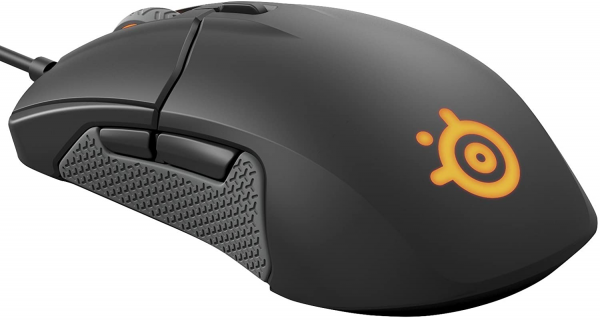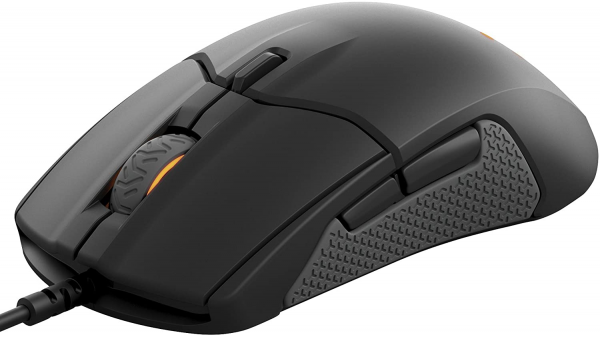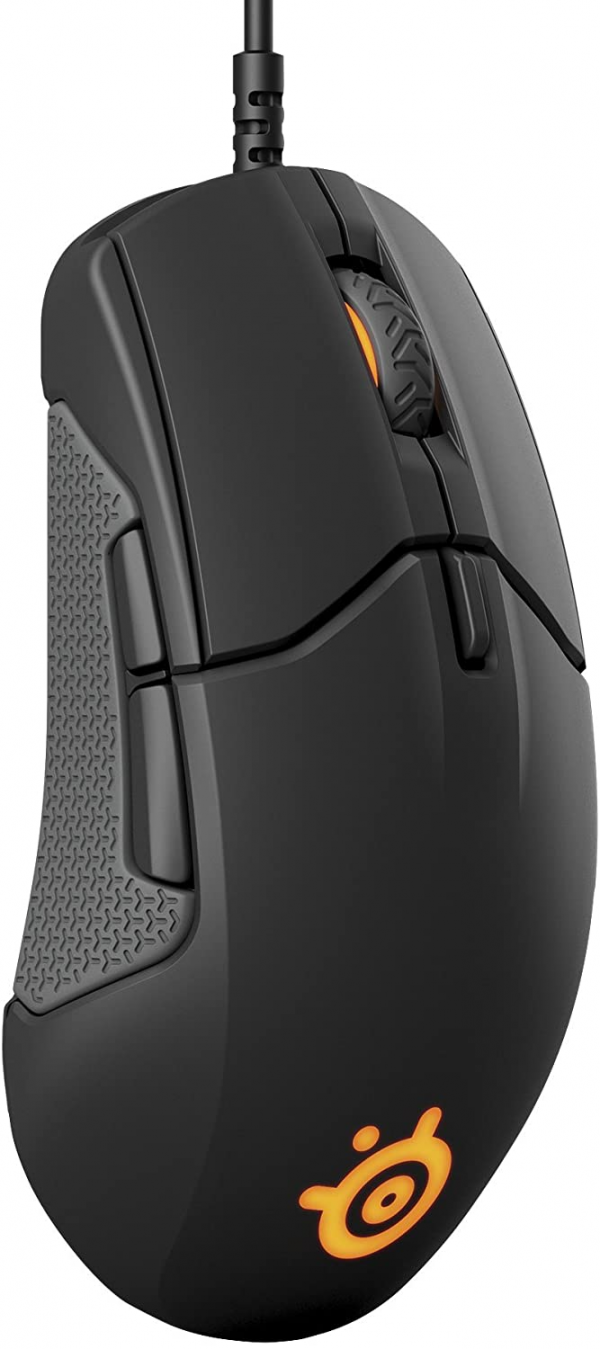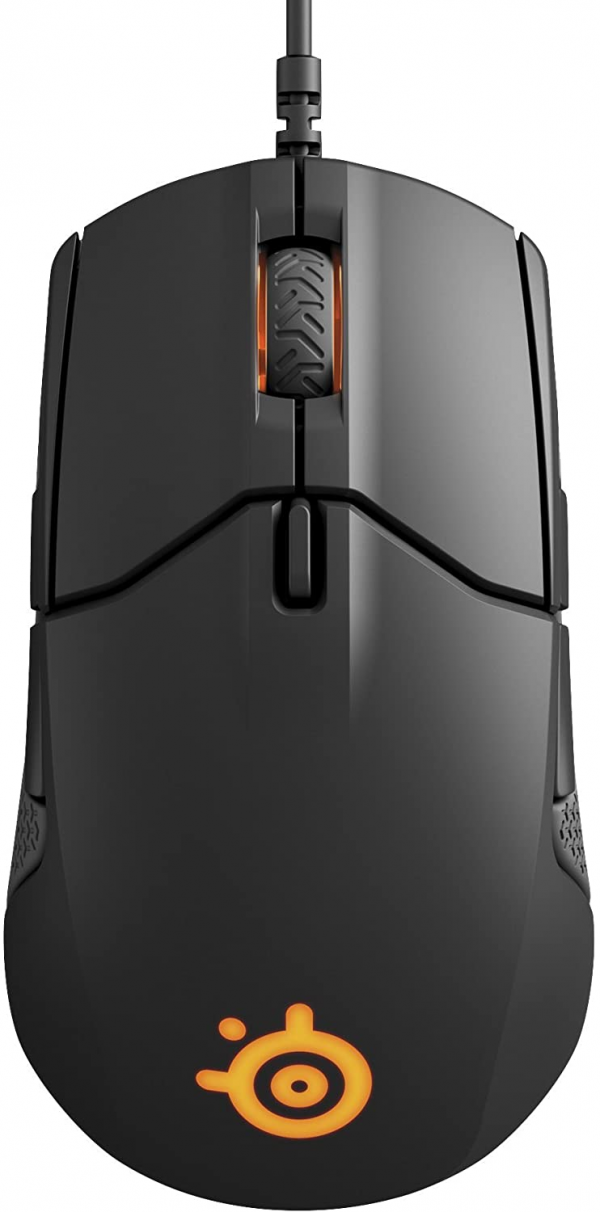SteelSeries
Sensei 310: SteelSeries renews its famous ambidextrous mouse
Aprox. 43€
See specificationsSteelSeries renews its famous ambidextrous mouse, the Sensei. A delicate operation which leaves no room for error as the previous version is appreciated by the players; it is no coincidence that some manufacturers have adopted its design for their own mice (Dream Machines DM1 Pro S, Nixeus Revel ...). If the Danish manufacturer retains the DNA of the original Sensei, it has however completely revised its copy.
Positive points
Safe and comfortable grip.
True ambidextrous design with two buttons on each edge.
Good build quality.
High performance optical sensor.
Bad points
Only 2 configurable sensitivity levels.
Our review
Presentation
The Sensei 310 rests on the same basis as the Rival 310. Apart from the two additional buttons of the first, only the shape distinguishes these two mice from one another.

Ergonomics
The Sensei has long been a benchmark for many players, but it must be recognized that its design was somewhat dated. If its simple look could still appeal, progress has been made in terms of the materials used and ergonomics in general. We are therefore not surprised to find that SteelSeries has completely revised the design of the Sensei 310.
The proportions of the youngest are nevertheless very close to those of its elder: 125.1 x 70.4 x 39 mm, against 125.5 x 68.3 x 38.7 mm. It is therefore always a fairly flat mouse, but long enough not to disturb large hands.
The Sensei 310 is nevertheless more suitable for gripping or fingertip, although it is possible to put the palm entirely on it if the fingers are not too long. Despite a perfectly symmetrical shape which is enough to delight left-handers, the mouse is just as pleasant to use for right-handers. Of course, neither will benefit from an inclination and a shape following the contours of their hands, but insofar as the Sensei 310 encourages a grip with the fingertips, that does not seem too much embarrassing.
The Sensei 310 has also been reduced by ten grams (92.1 g against 102 g for the first Sensei), which makes it more manageable. This makes it easier to lift, especially since its edges are coated with an anti-slip elastomeric material. SteelSeries specifies that the latter is in fact "pure silicone", designed to ensure "an extremely durable grip". If we can not verify this statement in just a few weeks of use, it is clear that this coating actually appears resistant and nevertheless flexible enough to offer a pleasant touch.
SteelSeries highlights this sustainability criterion to target eSports this time. The main plastic of the hull, matt and semi-rough, thus follows the same logic and favors efficiency and solidity. It is especially designed to avoid fingerprints that can easily occur, especially due to sweat.
In terms of buttons, the Sensei 310 is classic. The two main buttons respond perfectly, aided by their Omron switches guaranteed for 50 million activations. The wheel is also associated with its own switch, quite firm, but just as easy to activate. Each section also accommodates two buttons; easily accessible with the thumb and well separated from each other, they are well enough placed to avoid involuntary activations with the fingers opposite the thumb. Finally, a button finds its place above the wheel, allowing you to modify the sensitivity of the sensor (adjustable in the software, see box).
Regarding the wheel itself, note that it protrudes little from the body of the mouse. It is accessed more quickly, whether with the index or middle finger. Although notched, it does not emit noise.
In terms of sliding, the three skates fulfill their purpose well, ensuring smooth movements on a bare desk as on a mouse pad. However, it is always recommended to use a mat to improve gliding, reduce noise and preserve the skates.
If the mouse is very sober, SteelSeries has thought of lovers of multicolored light effects by backlit the logo as well as the wheel. The Sensei 310 can thus light up in multiple ways and even react to events in games compatible with the manufacturer's software.

Precision
Like most of its competitors, SteelSeries chose to trust Pixart to develop the optical sensor of its Sensei 310. And like them, it decided to base itself on the excellent PMW3360. The fruit of this partnership is a sensor called TrueMove3, which SteelSeries promises us designed specifically for eSport. It therefore offers high-flying characteristics, with a maximum capture speed of 8.9 m / s, and this up to accelerations of 50 g with 1: 1 tracking over a sensitivity range of 100 to 3,500 dpi. Sensitivity can reach 12,000 dpi, but very few players exceed 3,500 dpi, most even contenting themselves with less than 1,000 dpi. Remember that at 12,000 dpi, a movement of less than a centimeter is enough to cover the entire width of an Ultra HD screen; we can then say goodbye to precision. In practice, the Sensei 310 responds to all requests, whether playing in low or high sensitivity. Difficulty however to detect any differences with the other PMW3360 sensors.
In terms of surface recognition, it is also very convincing for optics, the mouse accommodating many coatings. Only glass and other transparent or too reflective surfaces are problematic for him, but being a mouse dedicated to the game, we can once again only encourage the use of a mouse pad.

Conclusion
The Sensei 310 does not betray the spirit of its predecessor. Suitable for most hands, it is even more pleasant to handle and gains in precision thanks to its excellent optical sensor. A very good mouse that will follow both right and left handers.

Specifications

